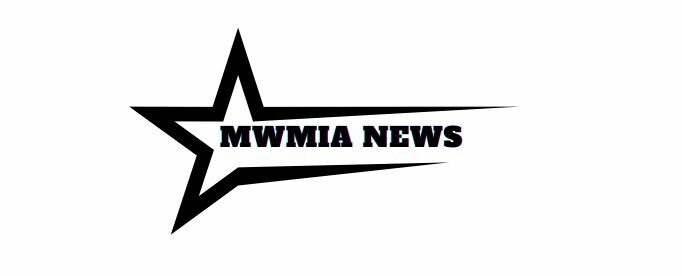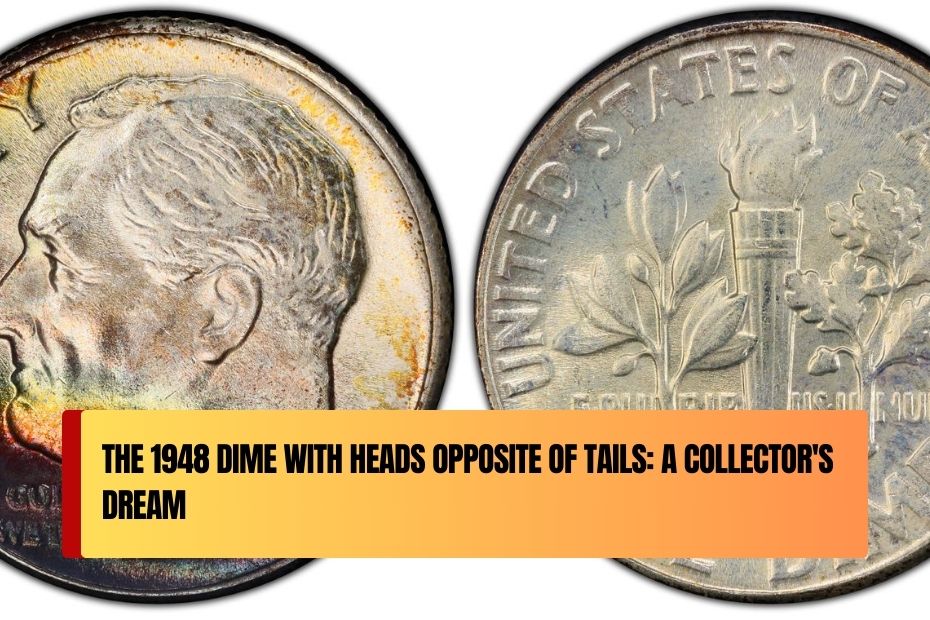Coin collecting can be full of surprises, and among the many rare finds, the 1948 U.S. dime with heads opposite of tails stands out. This unusual error coin has sparked interest among collectors and numismatists alike. But what exactly makes this dime so special? In this article, we will explore what the “heads opposite of tails” error is, why it is rare, how to identify it, and what makes it valuable.
What Is the “Heads Opposite of Tails” Error?
The “heads opposite of tails” error, also known as a “mated pair” or “misaligned die” error, happens during the minting process. A typical coin features the “heads” side (the obverse) with a portrait of a famous figure like a president or monarch, and the “tails” side (the reverse) with an image that represents a nation’s symbol, motto, or image.
However, in the case of this rare 1948 dime, the error occurs when the dies used to strike the coin are not aligned properly. As a result, the heads and tails sides of the coin are not positioned correctly, which leads to the heads being placed opposite or misaligned from the tails side. This is not a common mistake, and it makes the coin highly valuable and sought after by collectors.
Why Is the 1948 Dime with Heads Opposite of Tails So Rare?
The rarity of this particular 1948 dime lies in how infrequently this type of minting error occurs. The U.S. Mint uses large, precise machinery to strike coins, ensuring that the heads and tails are aligned as accurately as possible. When the dies (the engraved metal stamps used to create the coin designs) become misaligned, it can cause several errors, including double strikes, off-center designs, or the heads being placed in an incorrect position relative to the tail side.
Because this alignment issue is so rare and easily caught by the Mint’s quality control system, only a few coins like this slip through. Minting errors, especially those involving die misalignment, are uncommon, making these coins especially prized by collectors. The 1948 dime, being a part of a classic series, adds an extra layer of value to the coin for those interested in rare U.S. currency.
How to Identify a 1948 Dime with Heads Opposite of Tails
If you suspect that you have a 1948 dime with the “heads opposite of tails” error, you can look for a few key signs:
| Step | Action | What to Look For |
|---|---|---|
| 1. Check the Alignment | Examine the coin carefully to see if the heads and tails are perfectly aligned. | A misaligned coin will have heads and tails noticeably off-center. |
| 2. Examine the Designs | Look closely at the Franklin D. Roosevelt portrait (heads) and the torch, olive, and oak branch (tails). | The designs should align normally. If they appear skewed, it’s likely an error. |
| 3. Inspect the Edge | Hold the coin at various angles and check if the coin’s edge shows signs of misalignment. | A misaligned die may show an uneven edge or unevenly struck areas. |
How Much Is a 1948 Dime with Heads Opposite of Tails Worth?
The value of a 1948 dime with the “heads opposite of tails” error depends on several factors, including the coin’s condition, the clarity of the misalignment, and the current market for rare error coins. A typical 1948 dime in good condition is worth only 10 cents (its face value). However, a rare misaligned die error can increase the value significantly.
Here’s a general breakdown of the possible value range for this rare coin:
| Condition | Value Range | Description |
|---|---|---|
| Good (Low) | $50–$150 | Mild misalignment, still noticeable but not extreme. |
| Fine (Medium) | $150–$500 | Strong misalignment, with clear error visible. |
| Excellent (High) | $500–$1,500+ | Major misalignment, very noticeable and in great condition. |
Coins in excellent condition with a dramatic misalignment are likely to fetch the highest prices. It’s important to remember that professional grading services, like the Numismatic Guaranty Corporation (NGC) or Professional Coin Grading Service (PCGS), can provide a more accurate value assessment and help determine the authenticity of the error.
Why Do Collectors Value Error Coins?
Error coins are highly valued because they are rare and unique. Unlike typical coins, which are mass-produced and nearly identical, error coins tell a story about the manufacturing process. These coins offer a glimpse into the imperfect side of minting, where even the best machines can produce mistakes. Collectors find these errors fascinating because no two are ever exactly alike.
The rarity of these mistakes is also a big part of their appeal. A coin with an error is often the result of only a few coins being struck with that particular flaw, making it a piece of history that stands out. As such, error coins can increase in value over time, particularly when the error is well-documented and recognized within the numismatic community.
Conclusion
The rare 1948 dime with the “heads opposite of tails” error is a fascinating and valuable find for any serious coin collector. The misalignment between the heads and tails is a result of a minting error that makes this coin unique. While most coins are produced with perfect alignment, this rare mistake adds a special character to the dime, making it highly sought after. If you come across one of these rare 1948 dimes, you may be holding a piece of coin history worth significantly more than its face value.
FAQ’s
What is the “heads opposite of tails” error on a 1948 dime?
The “heads opposite of tails” error occurs when the heads and tails sides of a coin are not aligned properly during the minting process, resulting in a misaligned design.
How can I tell if my 1948 dime has this error?
Look for a noticeable misalignment between the Franklin D. Roosevelt portrait (heads side) and the reverse side design. The two sides should not line up perfectly if it is an error coin.
How much is a 1948 dime with heads opposite of tails worth?
The value can range from $50 to over $1,500, depending on the condition of the coin and how dramatic the misalignment is. Coins in excellent condition with a strong error are worth more.

